Apple's 2010 MacBook Air (11 & 13 inch) Thoroughly Reviewed
by Anand Lal Shimpi on October 26, 2010 10:08 PM EST- Posted in
- Mac
- Apple
- MacBook Air
- Laptops
The 11-inch as a Windows Notebook
As a follow-up to our Nvidia 320M/MacBook Pro 13 article last week, I’ve been running our Windows test suite on the MacBook Air 11”. I, like Anand, have the lowest end 11”er, with 2GB memory and the 64GB SSD. This makes installing Windows an interesting proposition since after the two OS installs, you’ve got right around 30GB of free disk space to work with. My suggestion - if you plan on installing Windows and dual booting often, save yourself the headache and get the 128GB model.
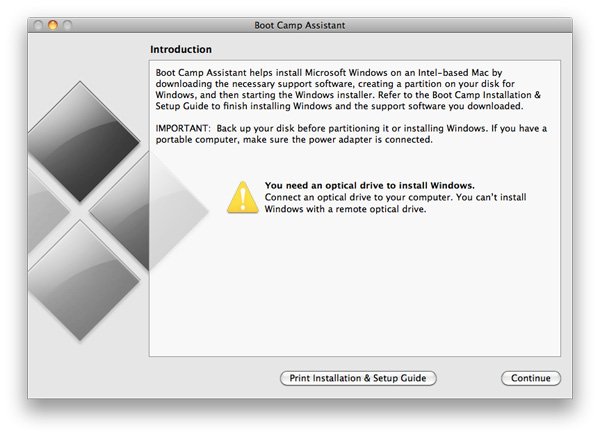
The other quirk with putting Windows on the Air is that it must be done with a USB optical drive - no hard drive/thumb drive installs. Interestingly, my external optical drive wasn’t recognized as a bootable drive, so I had to run out and grab an Apple SuperDrive. Apple says that you just need an external DVD drive, without specifying the MacBook Air SuperDrive, but your mileage may vary.
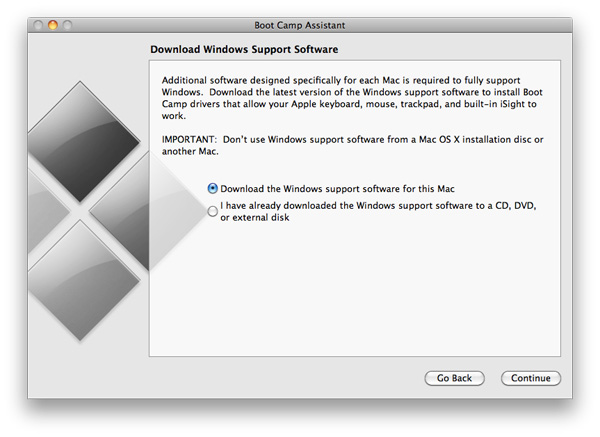
Boot Camp Drivers are now downloaded from Apple's servers prior to the Windows installation
With the Windows install out of the way, we were free to test the living daylights out of it, and that we most certainly did. The 11” Air has the same 1.4GHz Core 2 Duo SU9400 as the similarly thin Dell Adamo 13. Months after we move to Arrandale ULV, leave it to Apple to bring the good old CULV platform back to relevance. As expected, Cinebench and the x264 encoding test gave us results around the same level as the Adamo and the rest of the old CULV gang. Versus the 13” MacBook Pro, you’re looking at roughly a 40% decrease in the CPU compute-heavy benchmarks, roughly equivalent to the reduction in clock speed from the 2.4GHz Pro to the 1.4GHz Air. Arrandale ULV notebooks, such as the Alienware M11x and its Core i7-620UM, are another matter entirely, with the newer architecture posting numbers nearly doubling the Air’s Core 2 processor.
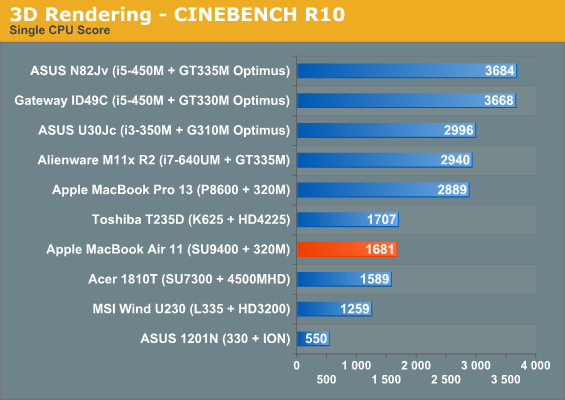
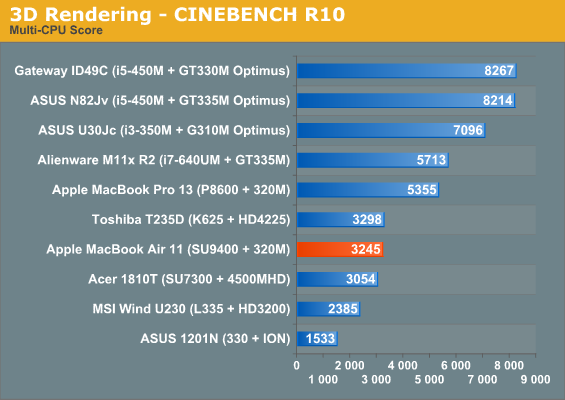
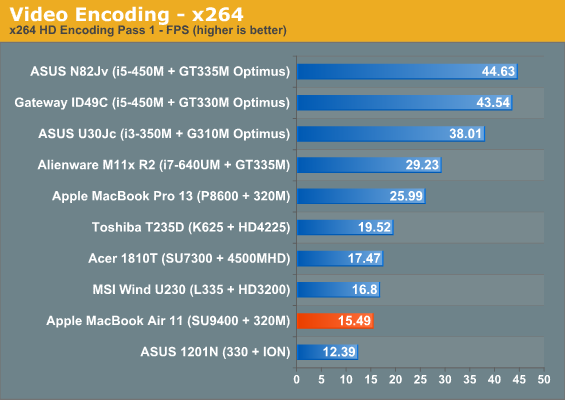

The gaming benchmarks get a bit more interesting. We’re looking at the same GT 216-derived GeForce 320M that was in the MacBook Pro 13, with the same 450MHz core and 950MHz shader clocks. Based on the performance we saw out of the Pro 13, we know that the Air, even in 11” form, can still hold its own in games.
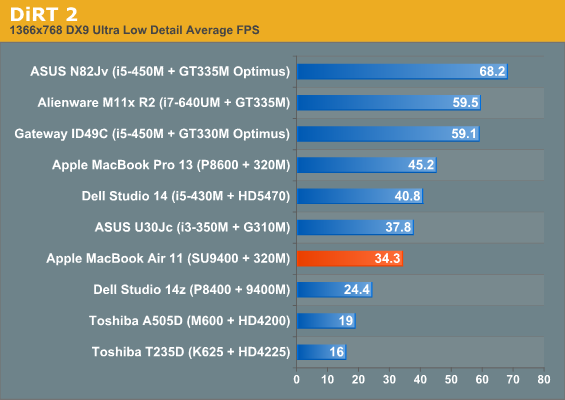
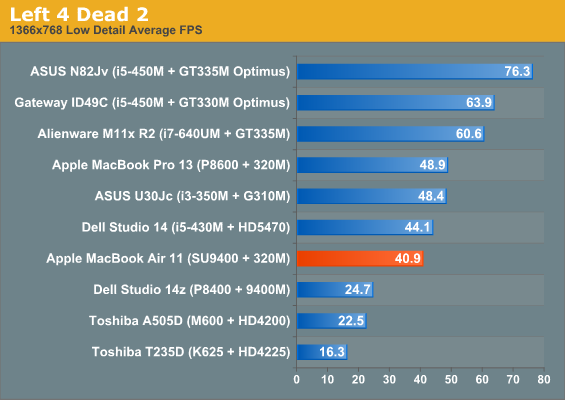
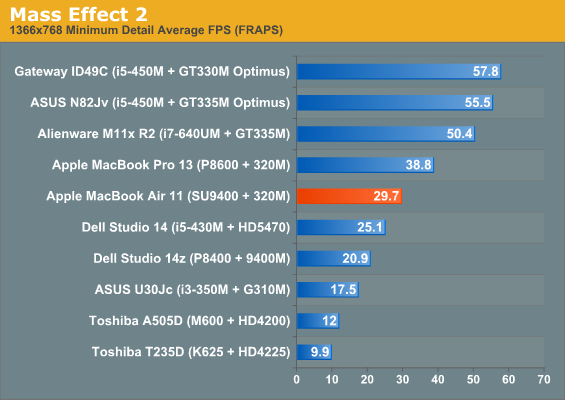
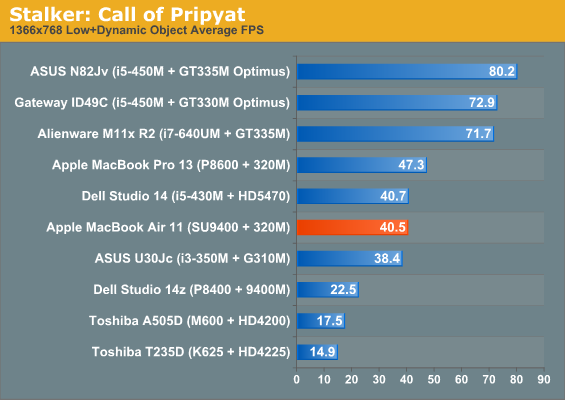
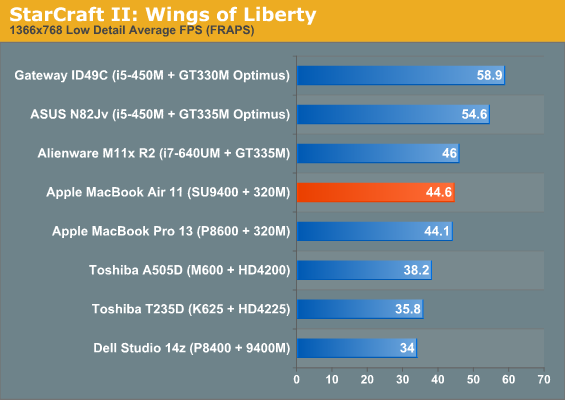
At low detail settings, the Air is pretty consistently 20% slower than the Pro 13, except in SC2, where they were roughly equal. Given that the GPU is identical and that both are using 256MB of the system’s DDR3 1066 memory, it is likely that the 1.4GHz Core 2 Duo is slow enough to put a bottleneck on gaming performance. It’s still a ways ahead of the ASUS Core i3/G 310M combo, and all of our games are playable at native resolution.
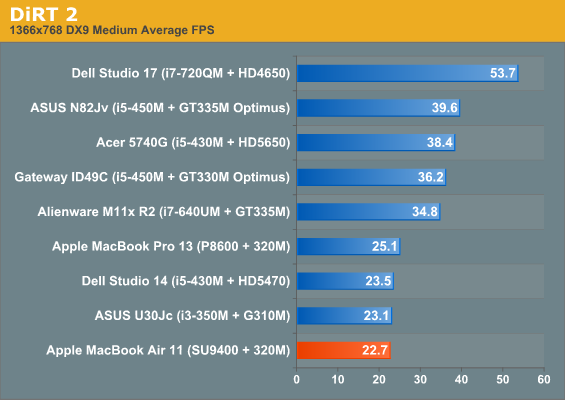
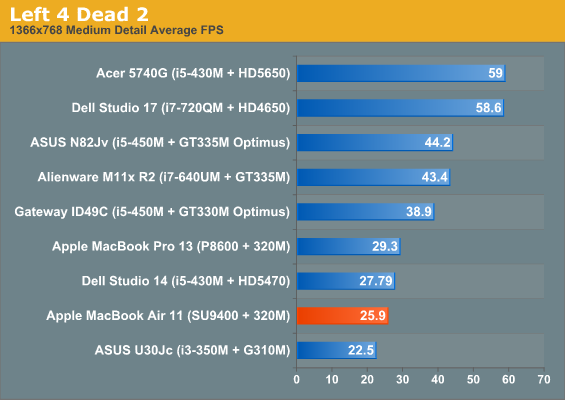
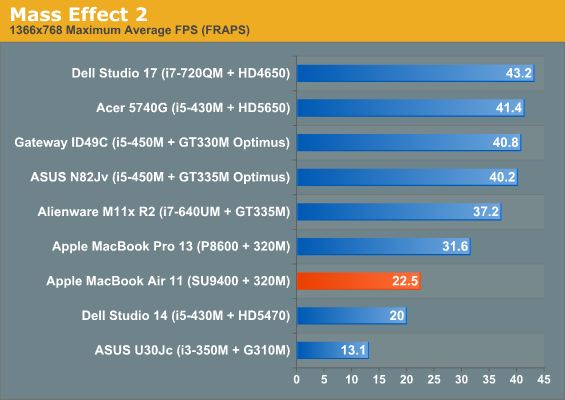
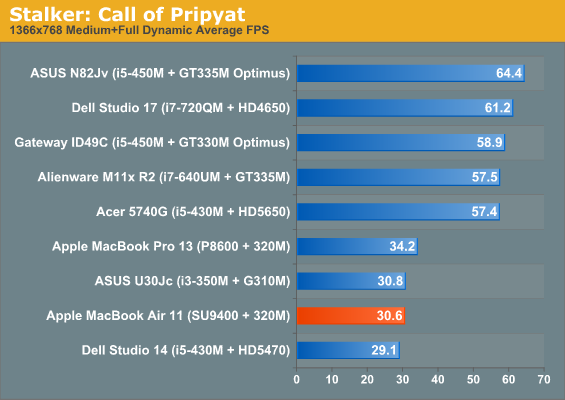
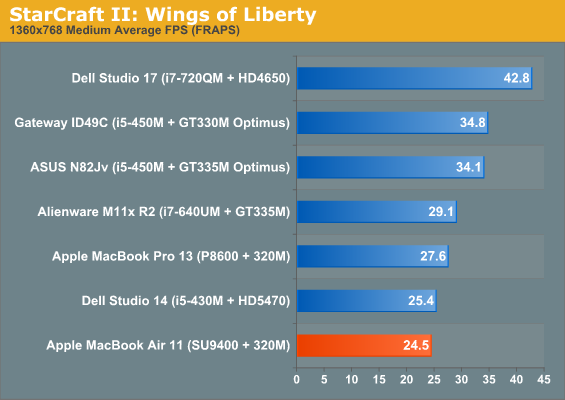
At medium settings though, the Air starts to fall off a bit. Where the MBP13 was borderline-playable, always between the 25-35 fps range, the Air is about 10% behind and makes it to the magical 30fps mark in STALKER, but nothing else. DiRT 2, Left 4Dead 2, Mass Effect 2, and StarCraft II all ended up between 22 and 26 fps, still faster than the G 310M, but not quite playable. Another interesting concern during gaming is heat. The Air isn’t the coolest notebook in the world, with idle temps hovering around 50C, but while running the gaming tests, I saw GPU temps rise up into the 70s. Nothing too alarming, but still pretty toasty and more than enough to get the fans spinning to the max.
But let’s put this all in perspective. This isn’t about just an 11.6” notebook that can game - the 11.6” M11x is the fastest gaming notebook under 5lbs, but even then it’s still a full two times heavier than the MB Air 11. The Air 11 shoehorns quite a bit of power into one of the smallest form factors on the market. Having a GT 216 core in an enclosure this small and being able to run these games at 40 fps at native resolution is definitely very impressive.










185 Comments
View All Comments
deslock - Thursday, October 28, 2010 - link
Thanks Anand & Vivek for the detailed and interesting review. I hope you post a followup with more info on how Apple was able to get this level of performance out of the hardware (vs other similar SSD-equipped machines). Also I'd like to see a long term test of performance (because of the lack of TRIM), or perhaps additional testing showing just how effective the new MBAs are with GC.Oscarcharliezulu - Thursday, October 28, 2010 - link
Thanks for a great, detailed review that doesn't gloss over any point. I've read as many reviews as I can find and many gloss over or just take things as a given - not much more useful than the Apple web site. Your review was detailed in all the right areas. I know where I will be disappointed and where I will be happy. No surprises thanks to your review.I think for a business user (web + mail + Word processing + presentations + lightweight spreadsheet) the Air's may be pretty good - finally great battery life (with wifi active) so I can go out to a customer and work off battery all day without carrying an extra battery or carrying the AC adapter.
Pity about the price - once you tick the options the price becomes ridiculous when you compare to mainstream laptops. I will have to stick to a base model + 4GB ram, and wait to upgrade the SSD later (someone is sure to come up with an upgrade).
And graphics - for ultraportables its good, but the higher end pro's etc really need a lot more grunt - we should be able to play games at High at native resolution.
pmeinl - Friday, October 29, 2010 - link
Just stumbled across an SSD 256GB upgrade kit for the 11.6":http://www.photofast.tw/products/GM2_SFV1_Air.html
It includes an USB adapter for using the orginal SSD as portable storage.
mutatio - Friday, October 29, 2010 - link
Anyone else hear this thing screaming for Fusion in it? If AMD can finally get their power specs in line to be competitive with intel the 11" would be one smoking little monster if Apple bites at it. :-)63jax - Friday, October 29, 2010 - link
don't hurry to change your mac's, just wait for AMD to release their Fuzion chips and then we will have the perfect Mac's. i know i will...Norrah - Saturday, October 30, 2010 - link
I would really like to see how an older Macbook Air (rev c) with an aftermarket SSD would hold up against the new.. performance wise!I need the last kick, if i am to go for the new.
jorjitop - Saturday, October 30, 2010 - link
I think that there is another factor you missed which makes a difference to the relative performances. That is, the 11 inch has a 800 Mhz front bus, while the 13 inch has a 1066 Mhz front bus. In my experience, this makes a noticeable difference to performance.Brooklynzoned - Saturday, October 30, 2010 - link
Both models are 2010, Both machines are running Window's 7. Both Machines Score a 5.3 out of 7Apple Macbook Pro with a 2.4 8G Ram with a Seagate XT Hybrid....Scored 5.3
Apple Macbook Air with a 2.13 4G Ram with the 256 SSD Flash......Scored 5.3
Dell Adamo Onyx With a 1.4 4G Ram with a 128SSD .....................Scored 3.2
Funny thing is the Macbook Pro has a video card with 256 dedicated memory
the macbook air has shared video memory.... and scored higher in the 3D
Brooklynzoned - Saturday, October 30, 2010 - link
Battery Life Amazing,Speed,, Oh Yeah this baby moves.... N quick.. Faster then my Macbook Pro
its crazy how fast it starts up... not from sleep but from a full shutdown and startup. Fast...
The Macbook Air is The future of what a Notebook Should be.
ioannis - Sunday, October 31, 2010 - link
Anand,on page "The 13", the captions at the top seem to suggest that you are comparing the 13" MBA with 15" MBP, while the text suggests otherwise (13" MBA vs 13" MBP, which makes more sense).
thanks